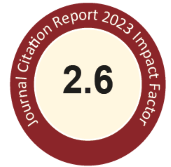Abstract
In the present study, we compare the performance of two reversed-phase liquid chromatographic approaches using different eluents either conventional hydro-organic eluent or micellar one for simultaneous estimation of hydrocortisone acetate and pramoxine hydrochloride in presence of their degradants and process-related impurities; hydrocortisone and 4-butoxyphenol, respectively. For conventional reversed-phase liquid chromatography (RPLC), separation of the studied compounds was completed on an Inertsil ODS 3-C18 column (150 mm × 4.6 mm, 5 μm particle size) with a mobile phase consists of 50 mM phosphate buffer (pH 5.0): acetonitrile (50: 50, v/v). For micellar liquid chromatography (MLC), an Eclipse XDB-C8 column (150 mm × 4.6 mm, 5 μm particle size) was chosen for the separation with a green mobile phase consists of 0.15 M sodium dodecyl sulfate, 0.3% triethylamine and 10% n-butanol in 20 mM orthophosphoric acid (pH 5.0). Both methods were extended to analyze hydrocortisone acetate and pramoxine hydrochloride in their co-formulated cream. RPLC was superior to MLC with regard to sensitivity for the estimation of impurities. While, MLC represents an eco-friendly, less hazardous and biodegradable approach. Furthermore, the direct injection of the cream to the system without the need to laborious samples pretreatment, excessive amount of analysis time and/or use of large amount of toxic organic solvents is one of the outstanding advantages of MLC. © 2018
ScienceDirect Link
Recommended Citation
Ibrahim, F.; El-Deen, A.K.; and Shimizu, K.
(2018)
"Comparative study of two different chromatographic approaches for quantitation of hydrocortisone acetate and pramoxine hydrochloride in presence of their impurities,"
Journal of Food and Drug Analysis: Vol. 26
:
Iss.
3
, Article 16.
Available at: https://doi.org/10.1016/j.jfda.2017.12.008
Creative Commons License

This work is licensed under a Creative Commons Attribution-Noncommercial-No Derivative Works 4.0 License.
Fulltext URL
https://www.sciencedirect.com/science/article/pii/S1021949818300243/pdfft?md5=be5b5f6a3ebbbf79498c60c0a5cc6855&pid=1-s2.0-S1021949818300243-main.pdf
Included in
Food Science Commons, Medicinal Chemistry and Pharmaceutics Commons, Pharmacology Commons, Toxicology Commons


Abstract Image